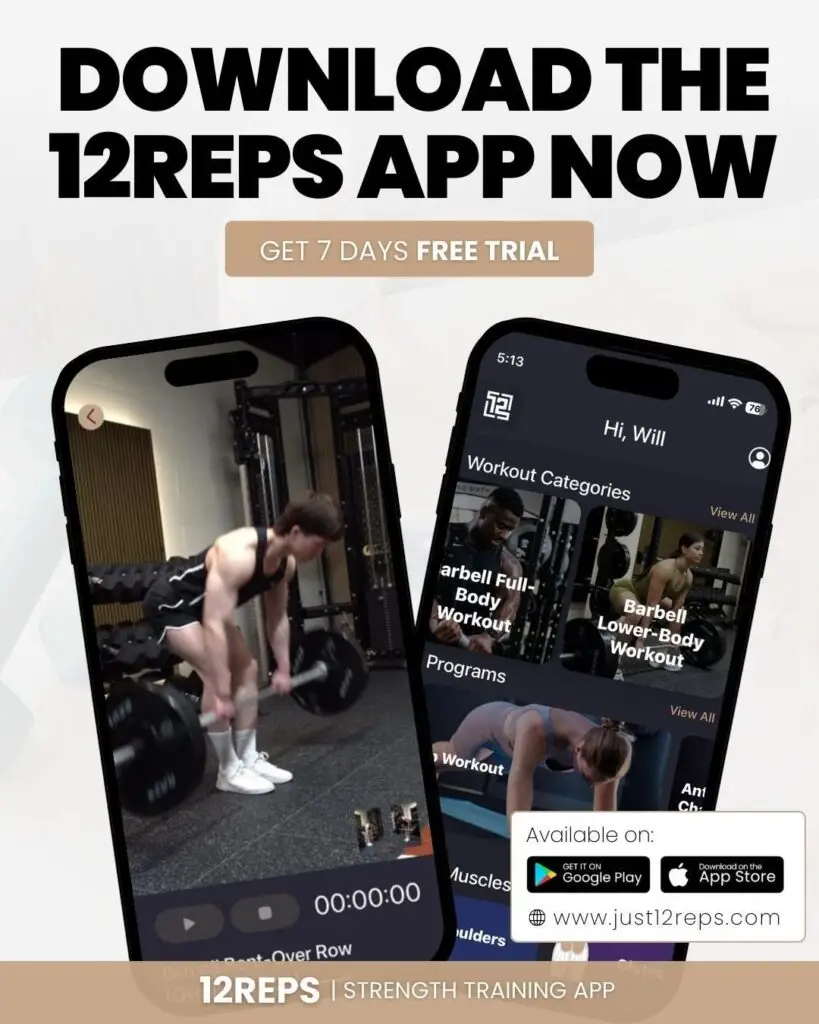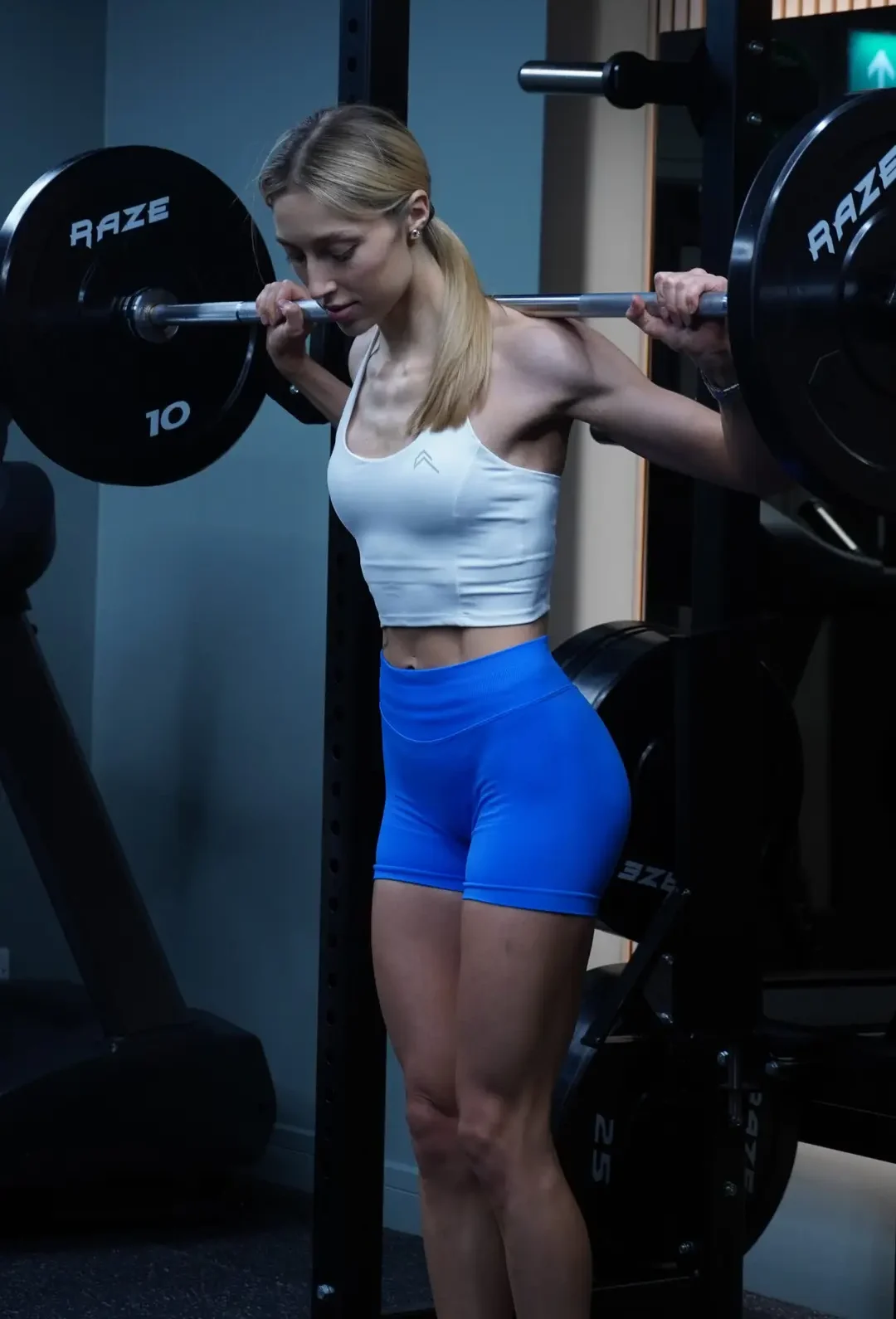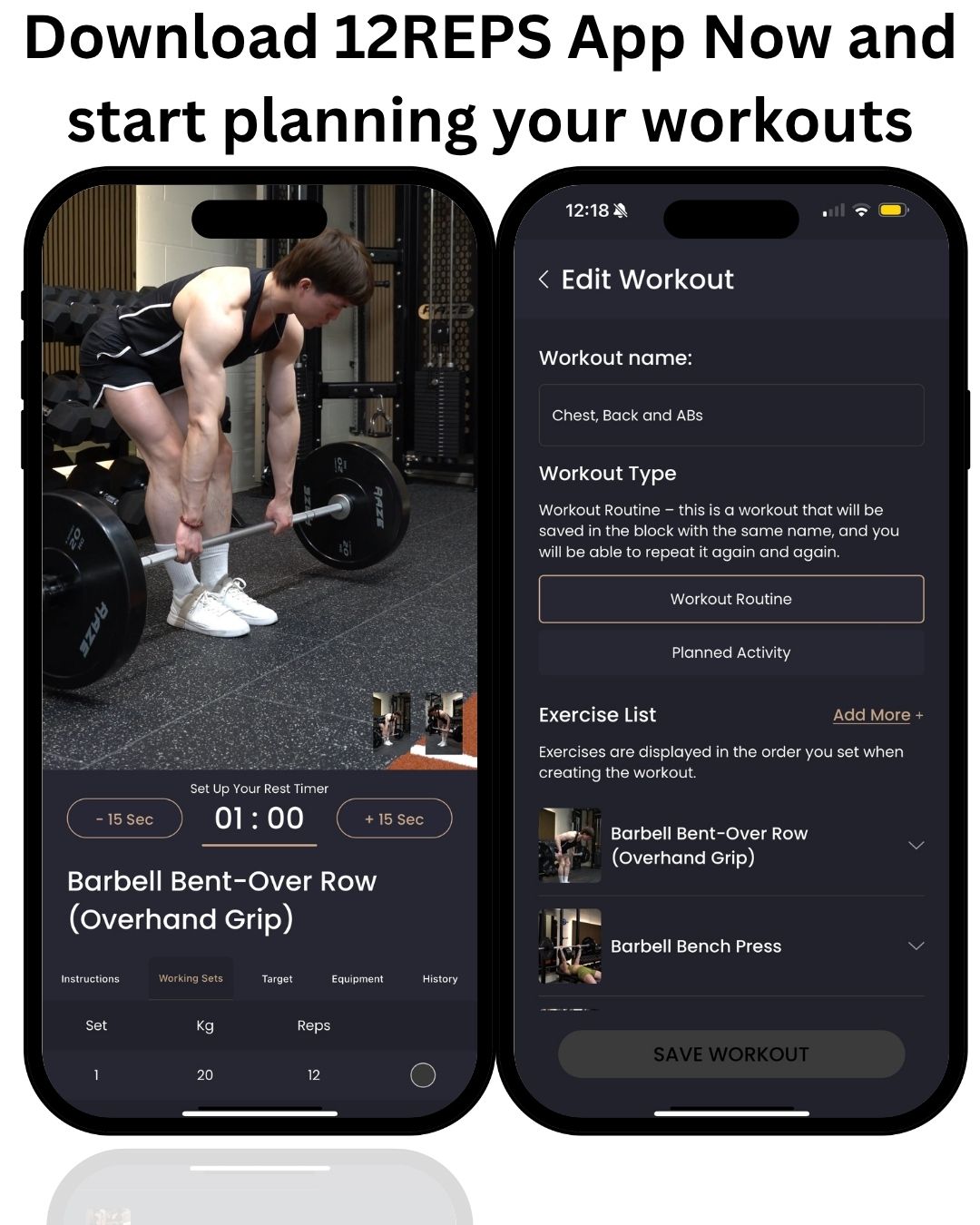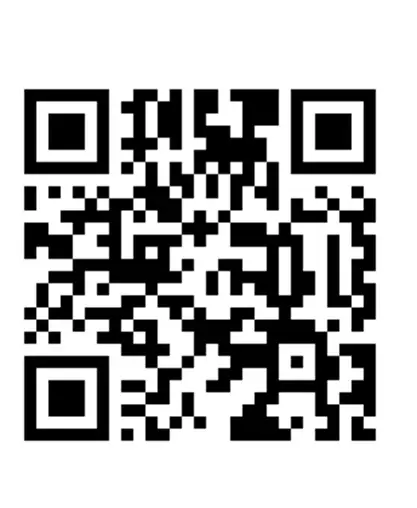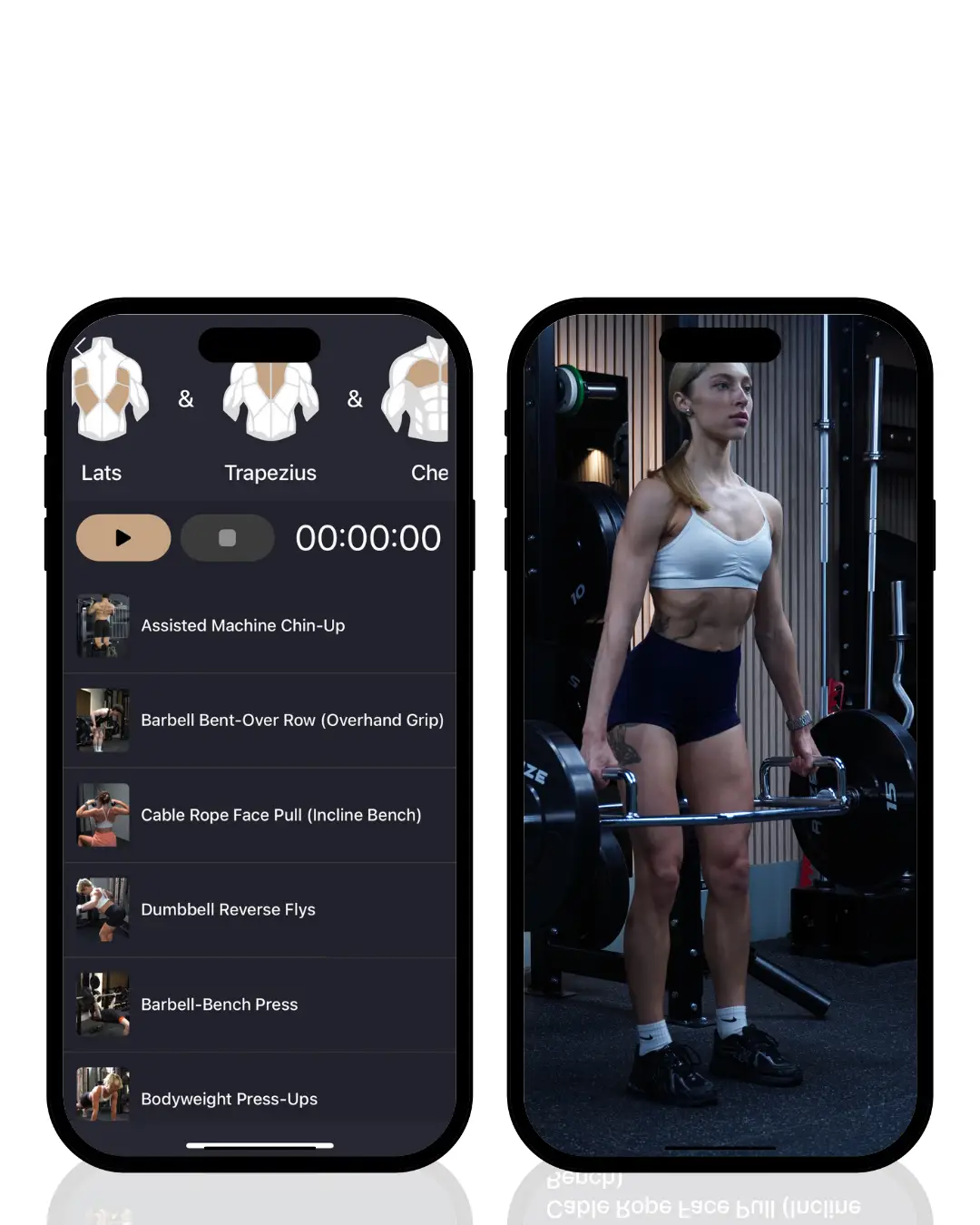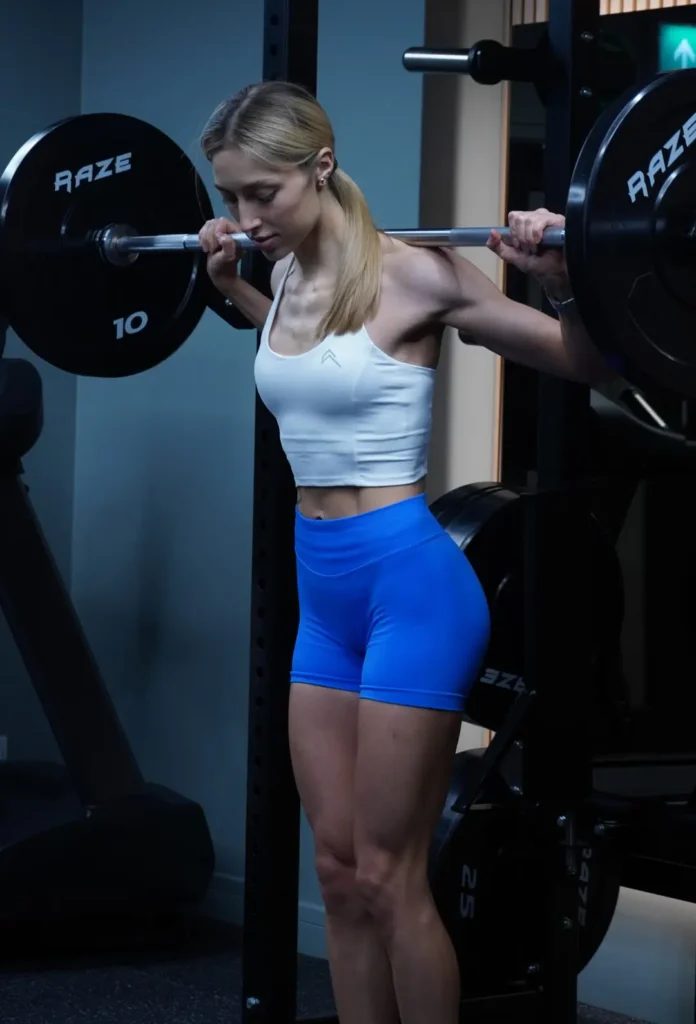By Will Duru, BSc (Hons) Sport and Exercise Science, Award-winning Personal Trainer with over 10 years of experience in strength training and optimising recovery.
Starting your fitness journey can feel scary. I know this because I’ve helped hundreds of beginners take their first steps into the gym over the past 10 years. The fear is real, the confusion is overwhelming, and the amount of conflicting advice online makes everything worse.
But here’s what I want you to know: fitness doesn’t have to be complicated. You don’t need to spend hours researching the perfect program or worry about making mistakes. In my experience as a personal trainer with a degree in Sport and Exercise Science, I’ve found that 12-rep training is the perfect starting point for beginners.
Why 12 reps? It’s simple, safe, and incredibly effective. This rep range gives you the best of both worlds, building muscle and strength while keeping injury risk low. Most importantly, it’s forgiving enough that you can focus on learning proper form without the pressure of lifting heavy weights.
In this guide, I’ll walk you through everything you need to know to start your 12-rep training journey. You’ll learn why this approach works so well for beginners, what equipment you need, how to perform the basic exercises, and how to create your first workout program. By the end, you’ll have the confidence and knowledge to start transforming your body safely and effectively.
The best part? You don’t have to figure this out alone. The 12reps app makes it simple with beginner-friendly programs that guide you every step of the way, just like having a personal trainer in your pocket.
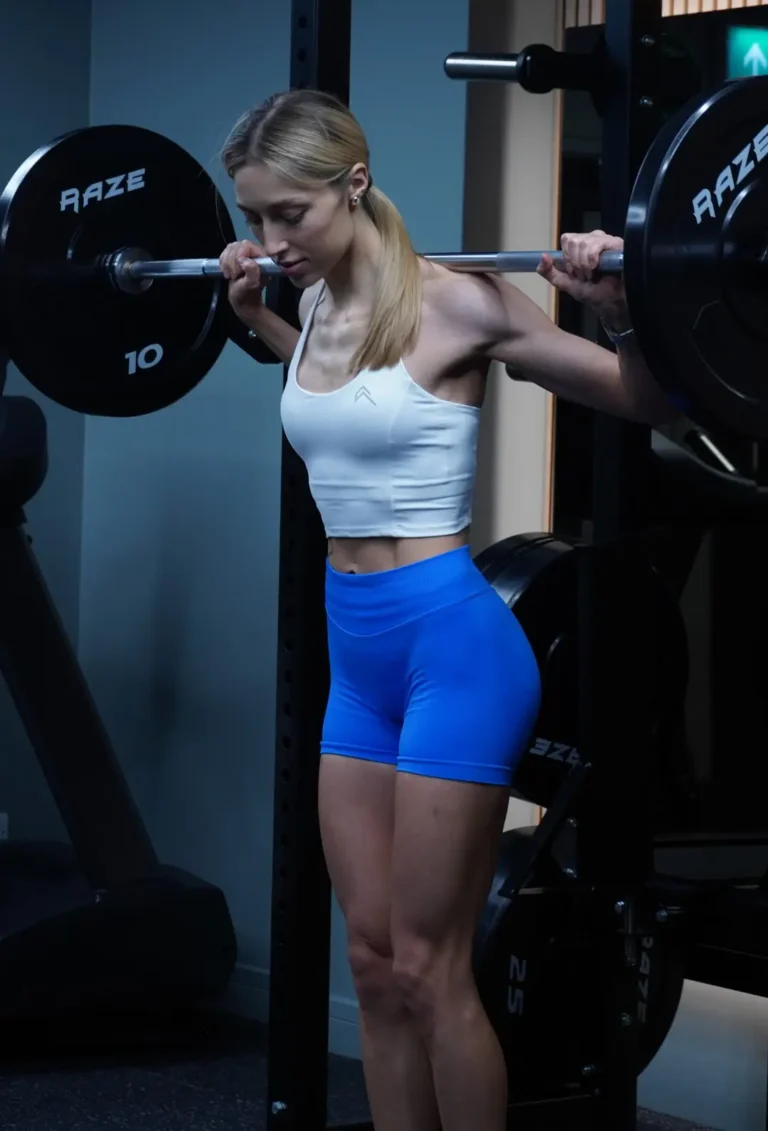
Why 12-Rep Training is Perfect for Beginners
After training beginners for over a decade, I can tell you that 12-rep training is hands down the best approach for people just starting out. Let me explain why this works so well.
Safety First, Always
When you’re new to lifting, your body needs time to adapt. Your muscles, tendons, ligaments, and joints all need to get used to the new demands you’re placing on them. With 12-rep training, you use moderate weights that challenge your muscles without overwhelming your body.
I’ve seen too many beginners get injured trying to lift heavy weights right away. They see someone squatting twice their body weight and think that’s what they need to do. But heavy
lifting requires perfect technique and years of preparation. With 12reps, you can focus on learning proper form while still getting amazing results.
Research shows that moderate rep ranges like 12 reps provide excellent muscle growth stimulus while maintaining lower injury risk compared to heavy lifting [1]. This is exactly what beginners need.
Perfect for Learning Movement Patterns
Every exercise is a skill that needs to be learned. When you do 12 reps, you get 12 chances to practice the movement in each set. This repetition helps your nervous system learn the correct movement patterns much faster than if you only did 3-5 reps.
Think about learning to drive a car. You didn’t become good at it after just a few attempts. You needed lots of practice to make the movements automatic. The same applies to exercises like squats, deadlifts, and bench press. The more quality repetitions you do, the better your form becomes.
Builds Confidence Gradually
Starting a fitness journey can be intimidating. You might feel weak, uncoordinated, or embarrassed about your current fitness level. The beauty of 12-rep training is that it allows you to start with lighter weights and build up gradually.
Every week, you’ll notice improvements. Maybe you can do one more rep, or the weight feels a bit easier, or your form looks better in the mirror. These small wins add up quickly and build the confidence you need to stick with your program long term.
Balanced Muscle and Strength Development
Many beginners think they have to choose between building muscle or getting stronger. With 12-rep training, you get both. This rep range sits in the sweet spot where you build significant muscle mass while also developing functional strength that helps in daily life.
You’ll notice that carrying groceries becomes easier, climbing stairs doesn’t leave you winded, and you feel more capable in your body. This practical strength is what most people really want from their fitness program.
Easier to Track Progress
Progress tracking is crucial for beginners because it keeps you motivated and shows that your hard work is paying off. With 12-rep training, progression is straightforward. You can easily track when you complete all your reps with good form and know it’s time to increase the weight.
The 12reps app is specifically designed with beginners in mind, providing form cues, progression guidance, and safety reminders throughout your workouts. It takes the guesswork out of when and how to progress.
Essential Equipment and Gym Setup
One of the biggest barriers for beginners is not knowing what equipment they need. The good news is that 12-rep training doesn’t require a lot of fancy equipment. Let me break down what you actually need versus what’s nice to have.
Minimum Equipment for Home Workouts
If you’re starting at home, you can begin your 12-rep training journey with just a few basic items:
A set of adjustable dumbbells is your best investment. Look for ones that go from 5 pounds up to at least 50 pounds per dumbbell. This range will last you for months or even years as you progress. You can perform almost every exercise you need with just dumbbells.
A sturdy bench is your second priority. It doesn’t need to be expensive, but it should be stable and adjustable if possible. You’ll use this for chest exercises, shoulder exercises, and as support for many other movements.
A yoga mat provides cushioning for floor exercises and stretching. It’s not essential, but it makes your workouts more comfortable.
Resistance bands are incredibly versatile and take up almost no space. They’re perfect for warm-ups, assistance with difficult exercises, and adding variety to your workouts.
Commercial Gym Advantages
If you have access to a gym, you’ll have more equipment options. Most gyms have everything you need for 12-rep training:
Dumbbells in various weights let you progress gradually. Cable machines provide smooth resistance and are excellent for beginners because they guide your movement path. Barbells allow you to lift heavier weights as you progress, though I recommend starting with dumbbells first.
The biggest advantage of a gym is having access to a variety of weightlifting equipment. As you get stronger, you can easily increase the resistance without buying new equipment.
Budget-Friendly Options
Starting your fitness journey doesn’t have to break the bank. Here are some cost-effective alternatives:
Instead of adjustable dumbbells, you can start with resistance bands and gradually add weights. Many exercises can be made challenging with just your body weight initially.
Look for used equipment online or at garage sales. Dumbbells and benches hold their value well and can often be found at significant discounts.
Many community centres have basic gym facilities at much lower costs than commercial gyms. These often have everything you need for 12-rep training.
Creating Your Workout Space
Whether at home or in a gym, your workout space should be safe and motivating. Make sure you have enough room to move freely in all directions. Good lighting helps you see your form and keeps you alert. If possible, position a mirror where you can check your technique.
Keep your space organised and clutter-free. Having to move things around before each workout creates unnecessary barriers to consistency.
Whether you’re working out at home or in a gym, the 12reps app adapts to your available equipment and provides alternative exercises when needed. This flexibility means you never have an excuse to skip a workout.
Fundamental Movement Patterns and Exercises
Understanding basic movement patterns is the foundation of all effective strength training. Instead of thinking about hundreds of different exercises, I teach my clients to focus on six fundamental patterns that cover all the major muscle groups.
The Squat Pattern
The squat is the king of lower-body exercises. It works your quadriceps, glutes, hamstrings, and core all at once. For beginners, I always start with bodyweight squats to master the movement pattern.
Stand with your feet shoulder-width apart, toes slightly turned out. Imagine sitting back into a chair, keeping your chest up, and knees tracking over your toes. Lower until your thighs are parallel to the floor, then drive through your heels to stand back up.
Common mistakes include letting the knees cave inward, leaning too far forward, or not going deep enough. Practice with just your body weight until the movement feels natural, then add resistance with dumbbells or a barbell.
The Hinge Pattern (Deadlift)
The hip hinge is crucial for a healthy back and strong posterior chain. This movement teaches you to bend at the hips while keeping your spine neutral. It’s the foundation for deadlifts, one of the most effective exercises you can do.
Start by practising the movement without weight. Stand tall, then push your hips back as if trying to touch a wall behind you with your glutes. Keep your chest up and knees slightly bent. You should feel a stretch in your hamstrings.
Once you master the bodyweight version, you can add resistance with dumbbells or a barbell. The deadlift works your entire posterior chain, including your glutes, hamstrings, and back muscles.
Horizontal Push Pattern
Pushing movements work your chest, shoulders, and triceps. The most basic version is the push-up, but many beginners find full push-ups too challenging initially.
Start with incline push-ups using a bench or wall. The higher the incline, the easier the exercise. As you get stronger, gradually lower the incline until you can do full push-ups on the floor.
For 12-rep training, the dumbbell chest press on a bench is excellent. It allows you to control the weight precisely and progress gradually.
Horizontal Pull Pattern
Pulling exercises balance out all the pushing you do and are crucial for good posture. Rows work your back muscles, rear deltoids, and biceps.
Dumbbell rows are perfect for beginners. Support yourself with one hand on a bench, hold a dumbbell in the other hand, and pull it toward your hip. Focus on squeezing your shoulder blades back and keeping your core tight.
Vertical Push Pattern
Overhead pressing builds shoulder strength and stability. Start with light dumbbells and focus on pressing straight up, not forward. Keep your core tight to protect your lower back.
The seated shoulder press is safer for beginners because it provides back support and prevents you from using momentum.
Vertical Pull Pattern
Pull-ups and chin-ups are the ultimate upper-body exercises, but they’re too difficult for most beginners. Start with assisted versions using resistance bands or an assisted pull-up machine if you’re in a gym.
Lat pulldowns are an excellent alternative that allows you to adjust the resistance to your current strength level.
Learning proper form is crucial for success. The 12reps app includes detailed exercise instructions, form videos, and technique tips to ensure you’re performing every movement correctly. It’s like having a personal trainer watching your form and providing feedback
Creating Your First 12-Rep Workout Program
Now that you understand the basic movement patterns, it’s time to put them together into an effective workout program. After 10 years of training beginners, I’ve learned that simple programs work best. Complexity is the enemy of consistency.
Full-Body vs Split Routines
For beginners, I always recommend full-body workouts. This means you’ll work all your major muscle groups in each session. Research supports this approach, showing that beginners can train the same muscles every other day and recover fully [2].
Full-body workouts are perfect because they’re time-efficient, allow for more practice of each movement pattern, and provide more flexibility in your schedule. If you miss a day, you haven’t missed training any particular muscle group.
Split routines, where you train different muscle groups on different days, are better suited for intermediate and advanced lifters who need more volume and recovery time.
Your First 12-Rep Program Structure
Here’s a simple but effective program structure that I use with all my beginner clients:
Workout A:
– Squat variation (12 reps)
– Horizontal push (12 reps)
– Horizontal pull (12 reps)
– Core exercise (12 reps)
Workout B:
– Hinge pattern/Deadlift (12 reps)
– Vertical push (12 reps)
– Vertical pull (12 reps)
– Core exercise (12 reps)
Alternate between Workout A and Workout B, training three times per week with at least one day of rest between sessions. For example: Monday (A), Wednesday (B), Friday (A), then the following week starts with Workout B.
Sets and Rest Periods
Start with 2 sets of each exercise. This provides enough stimulus for growth without overwhelming your recovery capacity. As you get stronger and more experienced, you can add a third set.
Rest 2-3 minutes between sets for compound exercises like squats and deadlifts. These movements use multiple muscle groups and require more recovery. For smaller exercises, 1-2 minutes is sufficient.
Starting Weights and Progression
This is where many beginners go wrong. They either start too heavy and get injured or too light and don’t see progress. Here’s my simple rule: start with a weight that feels moderately challenging for 12 reps, where you could probably do 2-3 more reps if you had to.
When you can complete all sets with perfect form and feel like you could do 15-16 reps, it’s time to increase the weight. Add 2.5-5 pounds for upper body exercises and 5-10 pounds for lower body exercises.
Weekly Schedule Example
Monday: Workout A
Tuesday: Rest or light activity (walking, stretching)
Wednesday: Workout B
Thursday: Rest or light activity
Friday: Workout A
Saturday: Rest or light activity
Sunday: Complete rest
This schedule gives you adequate recovery while maintaining consistency. Remember, your muscles grow during rest, not during the workout itself.
Creating an effective program requires careful planning and progression. The 12reps app eliminates the guesswork by providing professionally designed beginner programs that automatically progress as you get stronger. It’s like having a personal trainer design your workouts based on your individual progress.
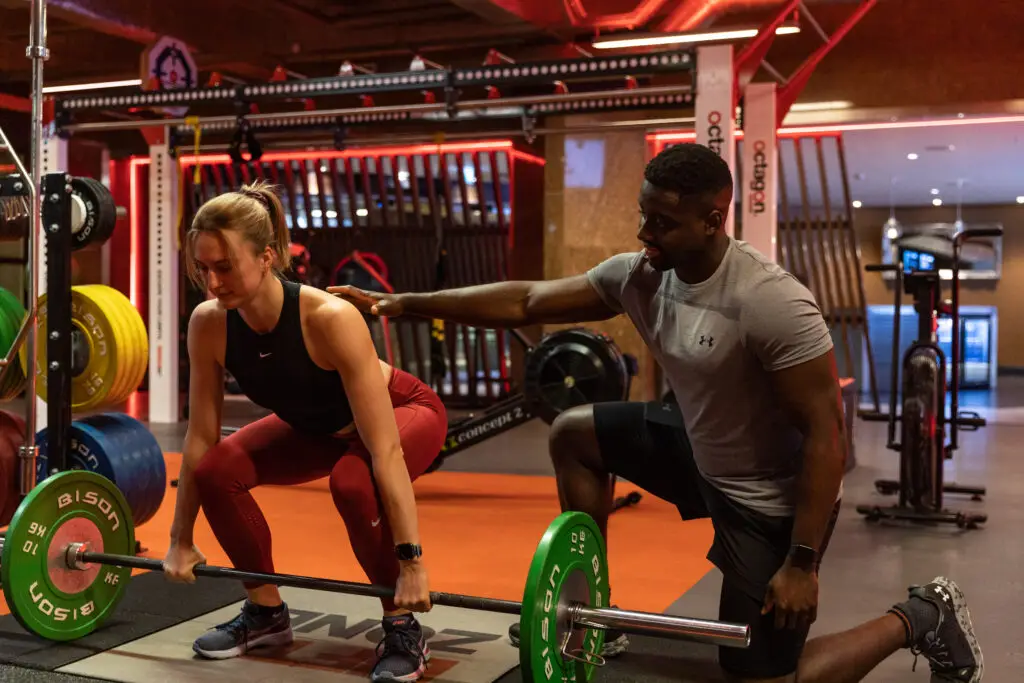
Tracking Progress and Staying Motivated
One of the biggest differences between people who succeed with fitness and those who quit is progress tracking. In my 10 years as a trainer, I’ve seen that people who track their workouts are far more likely to stick with their program and see results.
Why Tracking Matters for Beginners
When you’re new to exercise, progress happens quickly but can be hard to notice day to day. You might not realise you’re getting stronger until you look back at your first workout and see how much you’ve improved.
Tracking also helps you identify patterns. Maybe you notice you’re stronger on certain days of the week, or that you recover better when you get more sleep. This information helps you optimise your program for better results.
Most importantly, seeing your progress on paper (or on your phone) is incredibly motivating. On days when you don’t feel like working out, looking at how far you’ve come can give you the push you need to stay consistent.
What to Track
Keep it simple. You don’t need to track everything, just the most important metrics:
Exercise Performance: Record the exercise name, weight used, sets completed, and reps achieved. This is the most important data because it shows your strength progression.
How You Feel: Rate your energy level and how the workout felt on a scale of 1-10. This helps you understand how factors like sleep, stress, and nutrition affect your performance.
Body Measurements: Take basic measurements like weight, waist circumference, and progress photos. These changes more slowly than strength but provide valuable feedback about your body composition changes.
Sleep and Recovery: Note how many hours you slept and how recovered you feel. Poor sleep dramatically affects your workout performance and recovery.
Setting Realistic Expectations
This is crucial for beginners. The fitness industry is full of unrealistic promises and transformation photos that set impossible expectations. Let me give you realistic timelines based on what I’ve seen with hundreds of clients.
First 2 weeks: You’ll feel more energetic and start learning the movement patterns. Strength gains will be rapid as your nervous system adapts.
Weeks 3-4: You’ll notice the workouts feeling easier and your form improving. You might start seeing small changes in muscle tone.
Weeks 5-8: Visible muscle changes become apparent. Your clothes might fit differently. Strength gains continue steadily.
Weeks 9-12: Significant improvements in both strength and appearance. You’ll feel confident in the gym and have established a solid routine.
Remember, everyone progresses at different rates. Factors like age, starting fitness level, nutrition, sleep, and genetics all play a role. Focus on your own journey, not comparing yourself to others.
Overcoming Common Beginner Challenges
Every beginner faces similar obstacles. Here’s how to handle the most common ones:
“I’m not seeing results fast enough”: Progress in fitness is rarely linear. You might have great weeks followed by plateaus. This is normal. Trust the process and stay consistent.
“I missed a few workouts”: Life happens. Don’t let a few missed sessions derail your entire program. Just get back to your routine as soon as possible.
“The gym intimidates me”: Everyone feels this way initially. Remember that most people in the gym are focused on their own workouts and aren’t judging you. Start during off-peak hours when it’s less crowded.
“I don’t know if I’m doing exercises correctly”: This is a valid concern. Consider working with a trainer for a few sessions to learn proper form, or use resources like the 12reps app that provide detailed exercise instructions.
Staying motivated and tracking progress is easier with the right tools. The 12reps app automatically tracks your workouts, celebrates your achievements, and keeps you motivated with progress insights. It’s like having a personal trainer and workout buddy combined.
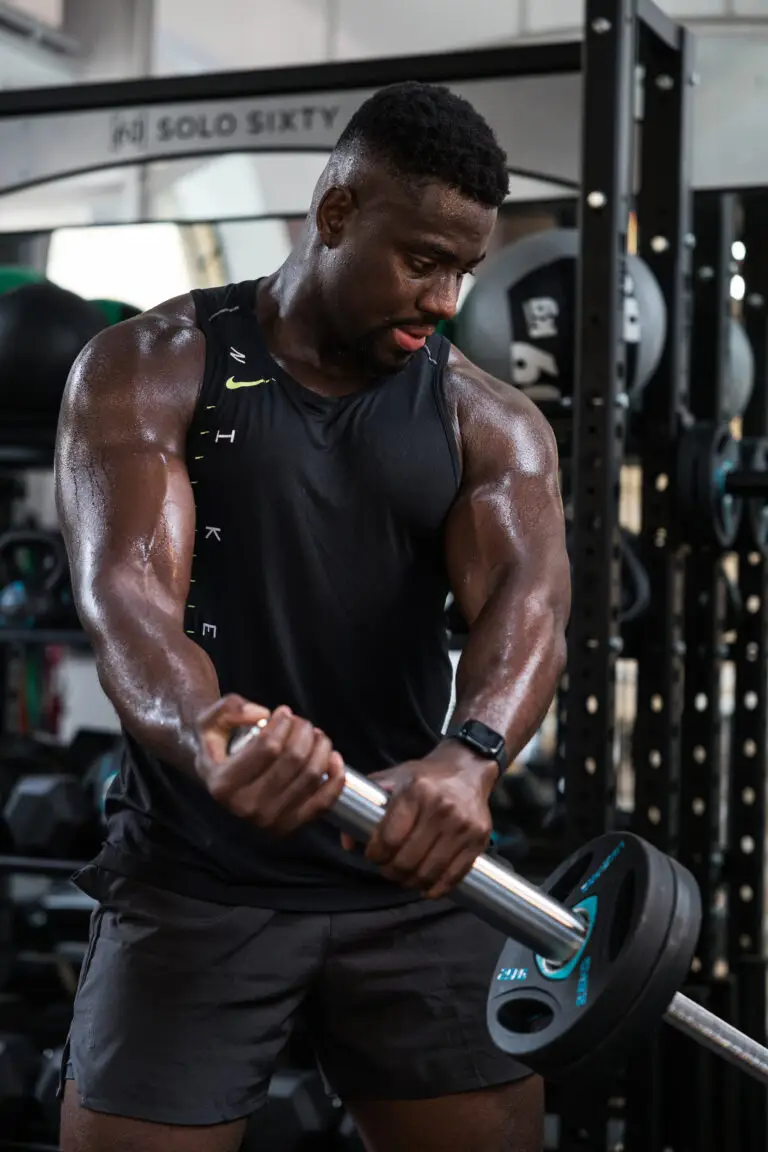
Nutrition Basics for 12-Rep Training Success
You can’t out-train a bad diet. After 10 years of helping people transform their bodies, I’ve learned that nutrition is just as important as your workout program. But here’s the good news: nutrition for beginners doesn’t have to be complicated.
The Foundation: Eat Enough Protein
Protein is the building block of muscle. When you do 12-rep training, you’re creating tiny tears in your muscle fibers. Your body repairs these tears with protein, making the muscle bigger and stronger than before.
Most beginners don’t eat nearly enough protein. Aim for about 0.8-1 gram of protein per pound of body weight. So if you weigh 150 pounds, you need 120-150 grams of protein per day.
Good protein sources include chicken, fish, eggs, dairy products, beans, and protein powder. Try to include a protein source with every meal and snack.
Fuel Your Workouts Properly
What you eat before and after your workouts can significantly impact your performance and recovery. You don’t need complicated timing protocols, just some basic guidelines.
Before Your Workout: Eat a small meal or snack 1-2 hours before training. Include some carbohydrates for energy and a little protein. A banana with peanut butter or Greek yogurt with berries works perfectly.
After Your Workout: Within 2 hours of finishing your workout, eat a meal that includes both protein and carbohydrates. This helps your muscles recover and replenish energy stores. A protein shake with fruit or a chicken and rice bowl are excellent options.
Stay Hydrated
Dehydration can significantly impact your workout performance and recovery. Aim to drink water throughout the day, not just during your workout. A good rule of thumb is to drink half your body weight in ounces of water daily.
During your workout, sip water between sets. You don’t need sports drinks unless you’re training for more than an hour in hot conditions.
Simple Meal Planning for Busy Beginners
Many beginners get overwhelmed trying to plan perfect meals. Here’s a simple approach that works:
Build each meal around these components:
– A protein source (palm-sized portion)
– Vegetables (fill half your plate)
– A carbohydrate source (cupped hand portion)
– A healthy fat source (thumb-sized portion)
Meal prep basics: Cook proteins in bulk on weekends. Wash and chop vegetables when you get home from grocery shopping. Keep simple options on hand like canned beans, frozen vegetables, and quick-cooking grains.
Don’t aim for perfection: Focus on making better choices most of the time rather than perfect choices all the time. An 80/20 approach (eating well 80% of the time) is sustainable and effective.
What About Supplements?
The supplement industry wants you to believe you need dozens of products to see results. The truth is much simpler. For beginners, focus on getting your nutrition from whole foods first.
If you struggle to get enough protein from food, a basic whey protein powder can be helpful. A daily multivitamin provides insurance against nutrient gaps. Beyond that, supplements are generally unnecessary for beginners.
Proper nutrition supports your training efforts. While the 12reps app focuses on workouts, we also provide basic nutrition guidance to help you maximise your results. Remember, you’re building habits that will last a lifetime, so focus on changes you can maintain long term.
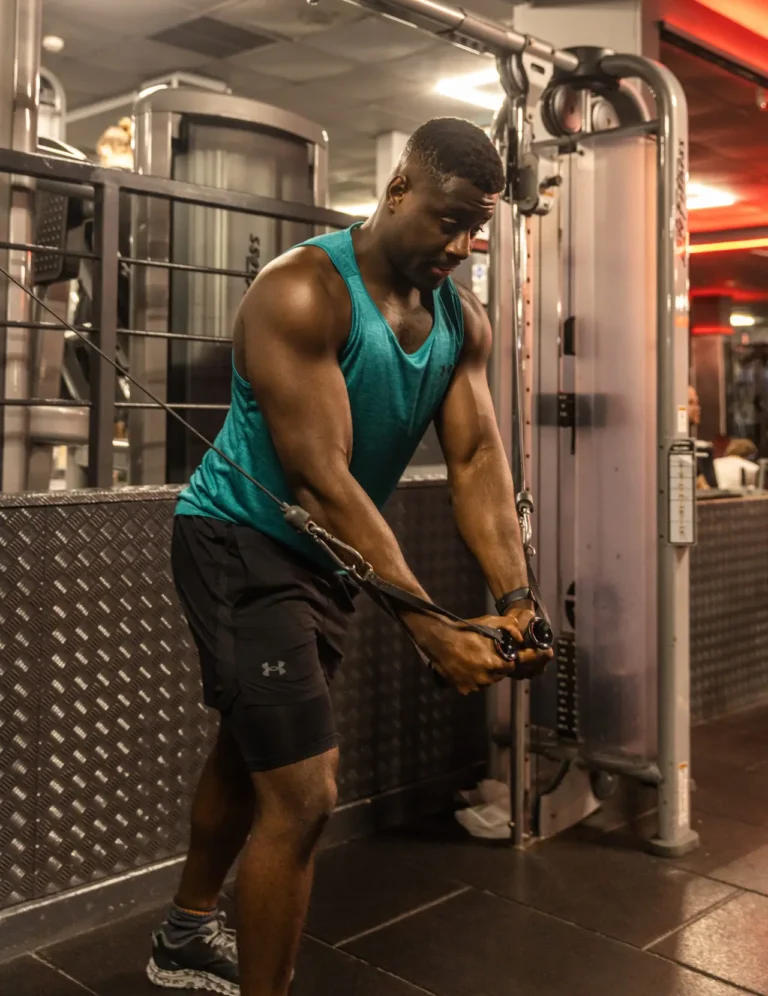
Safety Guidelines and Injury Prevention
Safety is my absolute top priority when training beginners. In 10 years of personal training, I’ve learned that preventing injuries is far more important than pushing for maximum results. An injury can set you back weeks or months, while training safely ensures consistent progress.
The Importance of Warming Up
Never skip your warm-up. I see beginners do this all the time because they’re eager to get to the “real” workout. But warming up prepares your body for exercise and significantly reduces injury risk.
A proper warm-up should last 5-10 minutes and gradually increase your heart rate and body temperature. Start with 5 minutes of light cardio like walking or cycling. Then do dynamic movements that mimic the exercises you’ll be doing.
For example, if you’re doing squats, do some bodyweight squats and leg swings. If you’re doing upper body exercises, do arm circles and light shoulder movements.
Learning to Distinguish Between Discomfort and Pain
This is crucial for beginners. Exercise should challenge you, but it shouldn’t hurt. Here’s how to tell the difference:
Normal exercise discomfort: Muscle fatigue, burning sensation during the last few reps, mild muscle soreness the next day. This is your muscles adapting to the new demands.
Warning signs to stop: Sharp pain, joint pain, pain that gets worse during the exercise, or any pain that doesn’t feel right. When in doubt, stop the exercise and consult a professional.
Research shows that moderate intensity training, like 12-rep protocols, has significantly lower injury rates compared to high-intensity training [3]. This is one of the main reasons I recommend this approach for beginners.
Progressive Overload Without Overreaching
Progressive overload means gradually increasing the demands on your muscles over time. This is essential for continued progress, but beginners often try to progress too quickly.
Increase weight only when you can complete all sets and reps with perfect form. Don’t add weight just because you think you should. Your body will tell you when it’s ready for more challenge.
If you’re struggling to complete your reps with good form, you’ve progressed too quickly. Drop the weight back down and focus on perfecting your technique.
Common Form Mistakes That Lead to Injury
Rounding your back during deadlifts: Keep your chest up and maintain the natural curve in your lower back throughout the movement.
Letting knees cave inward during squats: Focus on pushing your knees out in line with your toes.
Using momentum instead of muscle: Control the weight through the entire range of motion. If you’re swinging or bouncing the weight, it’s too heavy.
Neglecting your core: Keep your core engaged during all exercises to protect your spine and improve stability.
Building a Sustainable, Long-Term Approach
The goal isn’t just to avoid injury in the short term, but to build movement patterns and habits that will keep you healthy for decades. This means prioritising form over weight, listening to your body, and being patient with your progress.
Remember that fitness is a marathon, not a sprint. The person who trains consistently for years with moderate intensity will achieve far better results than someone who trains intensely for a few months and then gets injured or burns out.
When to Seek Professional Help
Consider working with a qualified personal trainer for at least a few sessions when you’re starting out. They can teach you proper form, help you set up an appropriate program, and give you confidence in the gym.
If you experience persistent pain or discomfort, don’t try to train through it. Consult with a healthcare professional or physical therapist.
Safety is our top priority. The 12reps app includes built-in safety features, form reminders, and recovery guidance to keep you training safely and effectively. It’s designed to help you build sustainable habits that will last a lifetime.
Conclusion and Next Steps
Congratulations on taking the first step toward transforming your health and fitness. Starting a workout program can feel overwhelming, but you now have all the knowledge you need to begin your 12rep training journey safely and effectively.
Let me recap the key principles that will guide your success:
Start with 12-rep training because it’s the perfect balance of safety and effectiveness for beginners. You’ll build muscle, gain strength, and develop confidence while minimising injury risk.
Focus on the fundamental movement patterns rather than getting caught up in complicated exercises. Master the squat, hinge, push, and pull patterns, and you’ll have everything you need for a complete workout.
Keep your program simple with full-body workouts three times per week. Consistency beats complexity every time.
Track your progress to stay motivated and see how far you’ve come. Small improvements add up to dramatic changes over time.
Prioritise safety by warming up properly, learning correct form, and listening to your body. An injury-free journey is a successful journey.
Be patient with yourself and trust the process. Fitness is a lifelong journey, not a quick fix. The habits you build now will serve you for decades to come.
Remember, everyone starts somewhere. The strongest, most confident people in the gym were once beginners just like you. What separates those who succeed from those who quit isn’t talent or genetics; it’s consistency and patience.
You don’t have to figure this out alone. The fitness industry can be confusing and overwhelming, but you now have a clear, science-based path forward.
